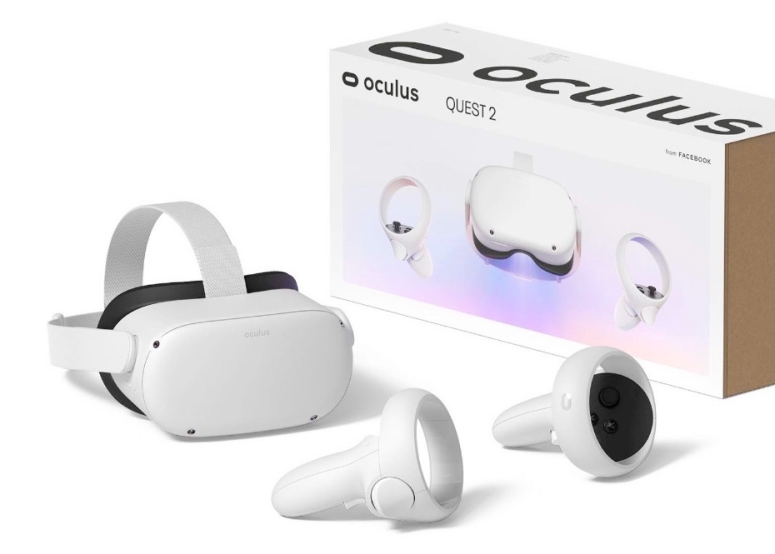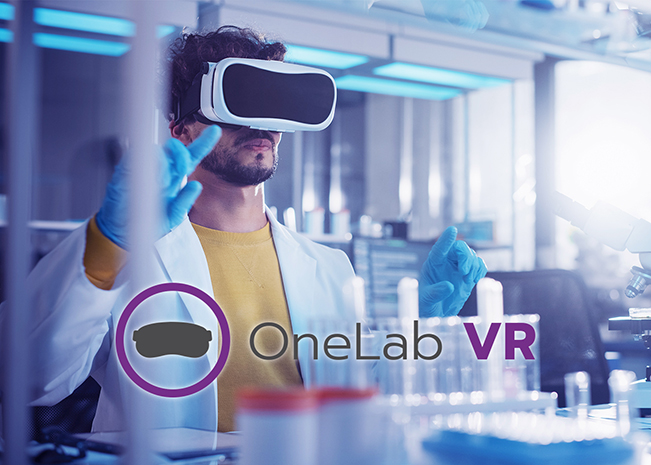
VR-Ready Laboratories Program
Get VR-Ready
Are you a U.S. public health, clinical, or academic laboratory at the national, state, or local level and interested in VR equipment?
Through a partnership with the Association of Public Health Laboratories (APHL), the OneLab VR Team can facilitate your laboratory site becoming VR-ready. All U.S. public health, clinical, and academic laboratories are eligible to participate. Email VR@cdc.gov to nominate your laboratory. Site selection will occur on a rolling basis.

Program Requirements
Each laboratory site will select a single point of contact to:
- Facilitate receipt of Meta Quest headsets
- Complete initial setup and configuration via Wi-Fi of Meta Quest headsets (Details below)
- Facilitate logistics for at least 25% of site staff to complete:
- LabTrainingVR: Biosafety Cabinet Edition course (60-90 minutes)
- Walk through OneLab VR – CDC's 50,000 square foot virtual training laboratory
Ensure site meets technical and space requirements:
- Mobile device able to download and install the Meta app
- Wi-Fi connection
- Work or personal Meta account
- Minimum 5-by-5-foot open space (10-by-10-foot space recommended)
2019 DLS VR Pilot Project

In 2019, CDC’s Division of Laboratory Systems (DLS) launched a three-year pilot project in partnership with the Center for Preparedness and Response to:
- Develop the first CDC VR laboratory training course
- Investigate whether laboratory learners gain skills in addition to knowledge when experiencing CDC VR training courses
- Identify criteria for training goals and topics for CDC distance-based learning that would benefit most from incorporating VR technology
Pilot Project Highlights
DLS designed, developed, pilot-tested, and evaluated a VR training course focused on setting up a biological safety cabinet (BSC), which is meant to supplement an existing BSC eLearning training course. The VR course was designed to:
- Identify the major parts of a BSC
- Demonstrate how to:
- maintain positive airflow
- prepare for work and apply safe-work practices
- decontaminate and shutdown conduct emergency shutdown procedures of a Class II BSC
- properly set up a BSC in a BSL-2 environment
DLS pilot-tested this course with 59 CDC staff members in two groups of learners: those who had experience using a BSC and those who did not. The results showed that VR training could improve learners’ confidence and teach laboratory skills.
2022 DLS Virtual Reality (VR) PushPack Program
In 2022, the Virtual Reality (VR) PushPack Program, a component of CDC’s OneLab Initiative, explored the potential of VR as an alternate format for training laboratory staff. This program assessed the “VR-readiness” of U.S. public health and clinical laboratories at the national, state, and local levels to use CDC VR laboratory trainings during an emergency response. All U.S. public health and clinical laboratories were eligible to participate. CDC delivered Meta Quest headsets to 31 enrolled laboratory sites. 360 laboratory staff completed CDC’s LabTrainingVR: Biosafety Cabinet Edition course and provided feedback on the course and VR program.


